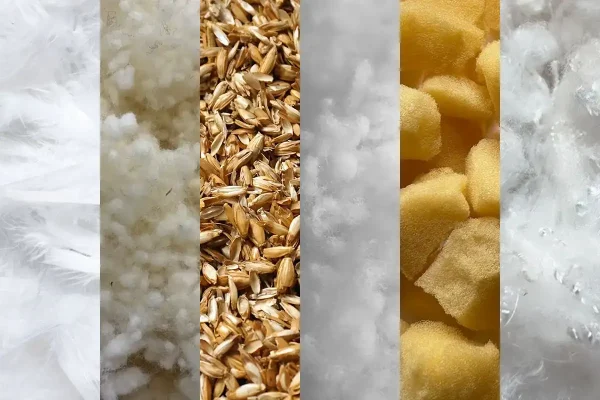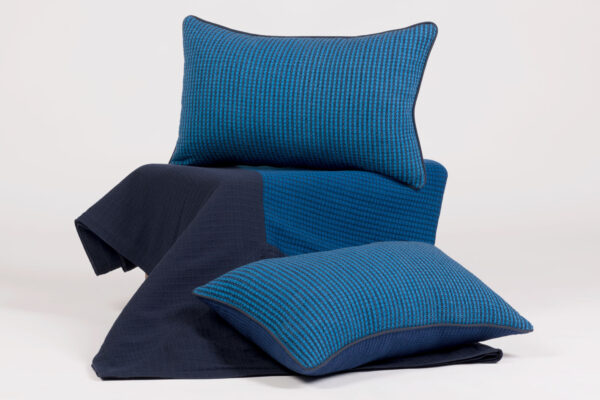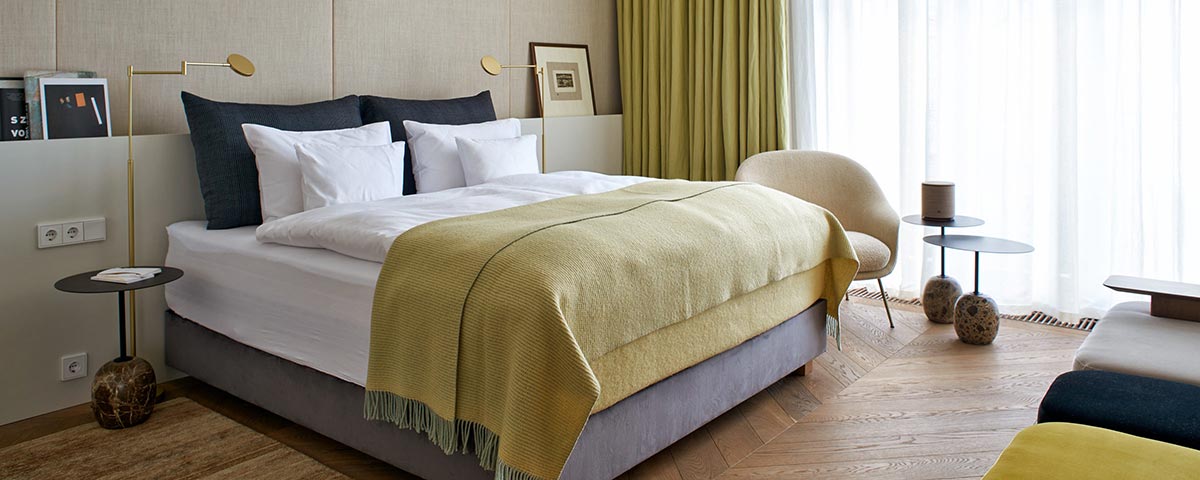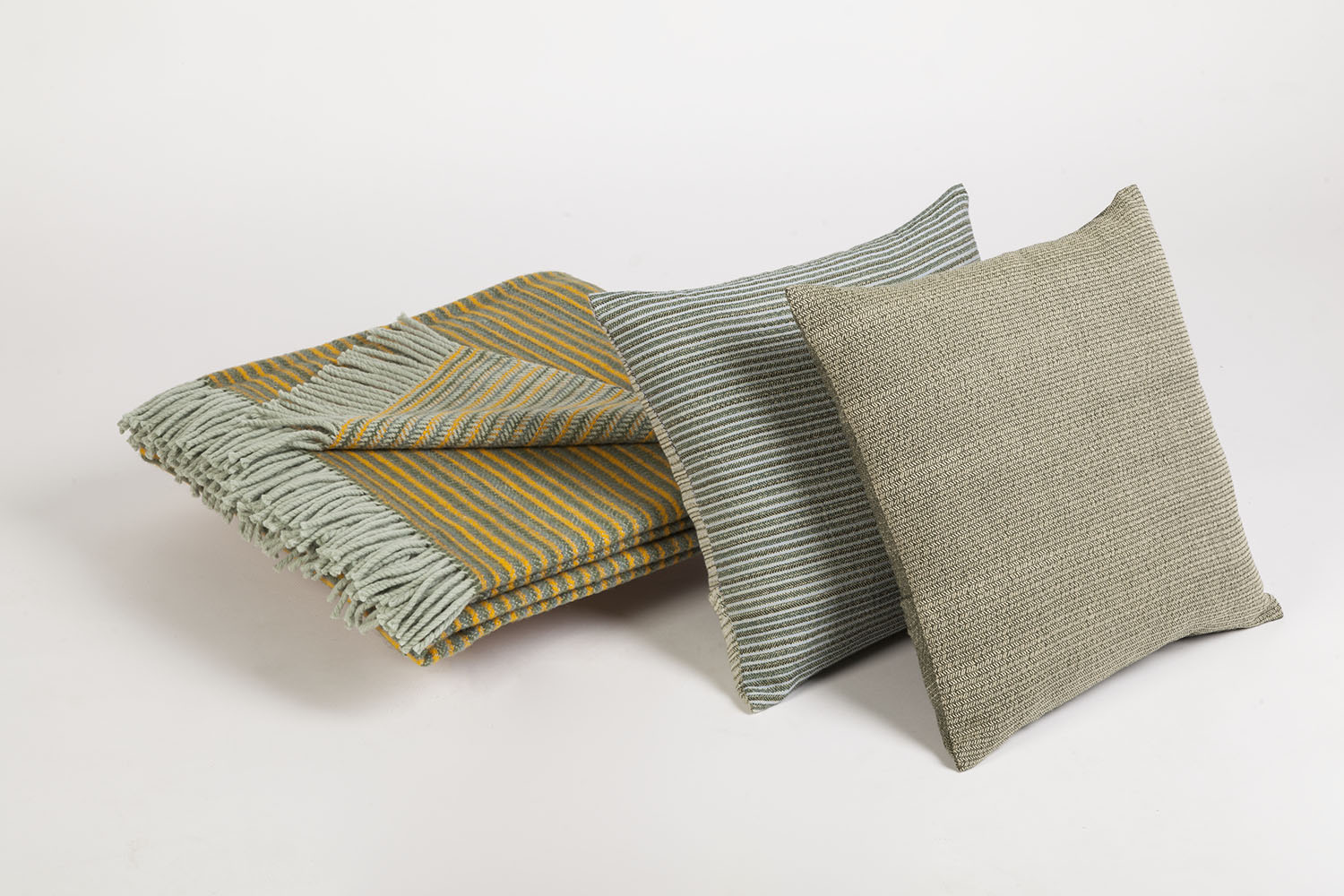Choosing the right pillow filler for your throw pillows is key to achieving the perfect balance of comfort, durability, and aesthetics. Since everyone has different needs and preferences, defining the best pillow filler isn’t always straightforward. But let’s give it a try! In this guide, we’ll walk you through the most common types of pillow stuffing materials — along with their pros and cons — to help you choose the best filler for throw pillows in your home.
Table of Contents:
Natural vs Synthetic Pillow Fillers
Throw pillows can be filled with either natural or synthetic fibers. Natural fillings can further be divided into plant-based and animal-derived materials. Synthetic stuffings tend to be more affordable and easier to care for, while natural options offer a wider range of unique qualities and a more eco-conscious choice.
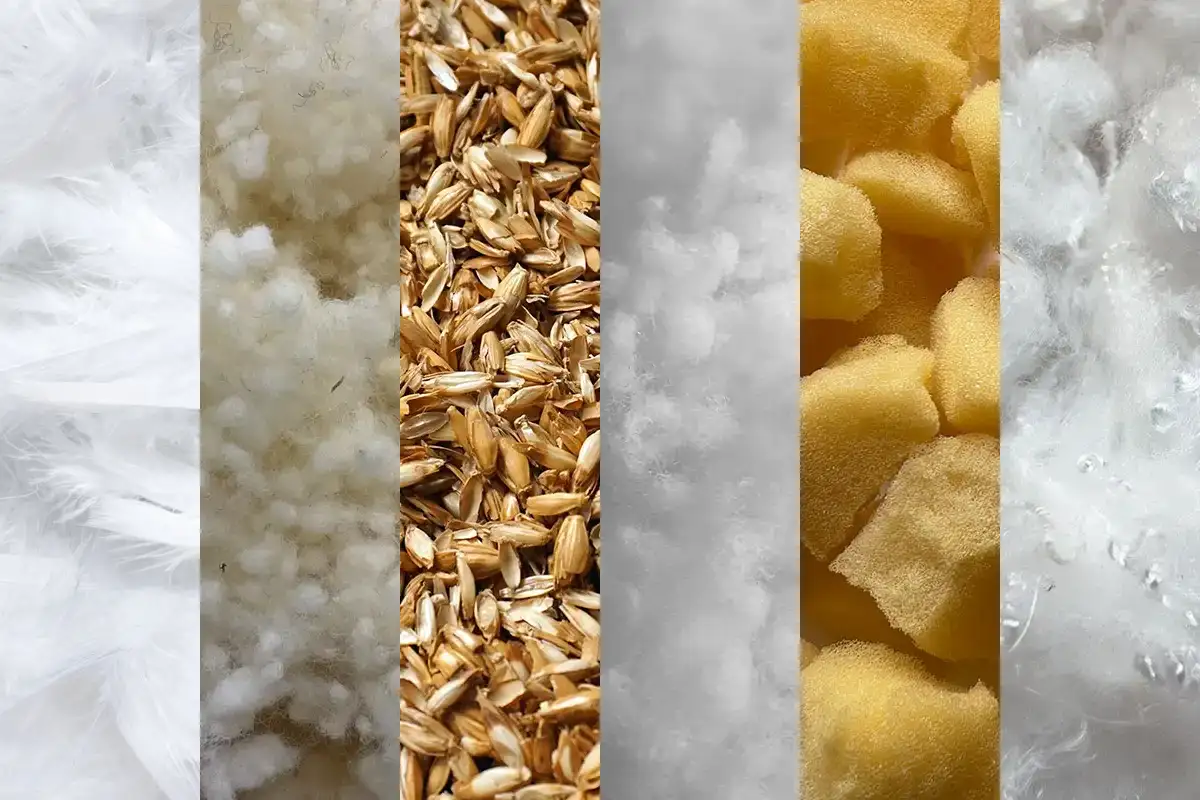
Duck Feather vs Goose Feather
Feathers used for pillow stuffing come from the outer plumage of ducks or geese. These feathers have a stiff central quill, which provides structure and support. Goose feathers typically have a stronger shaft, making them springier and more valuable than duck feathers. Feather fillers are commonly used in bed pillows, but they can be a firm and resilient option for decorative cushions too.
Pros of Feather Filling:
- Offers good support and structure
- Durable and long-lasting
- Retains shape well over time
- Readily available in Hungary and in many regions
Cons of Feather Filling:
- Quills may poke through the fabric
- May flatten over time; requires regular fluffing
- Not ideal for people with allergies
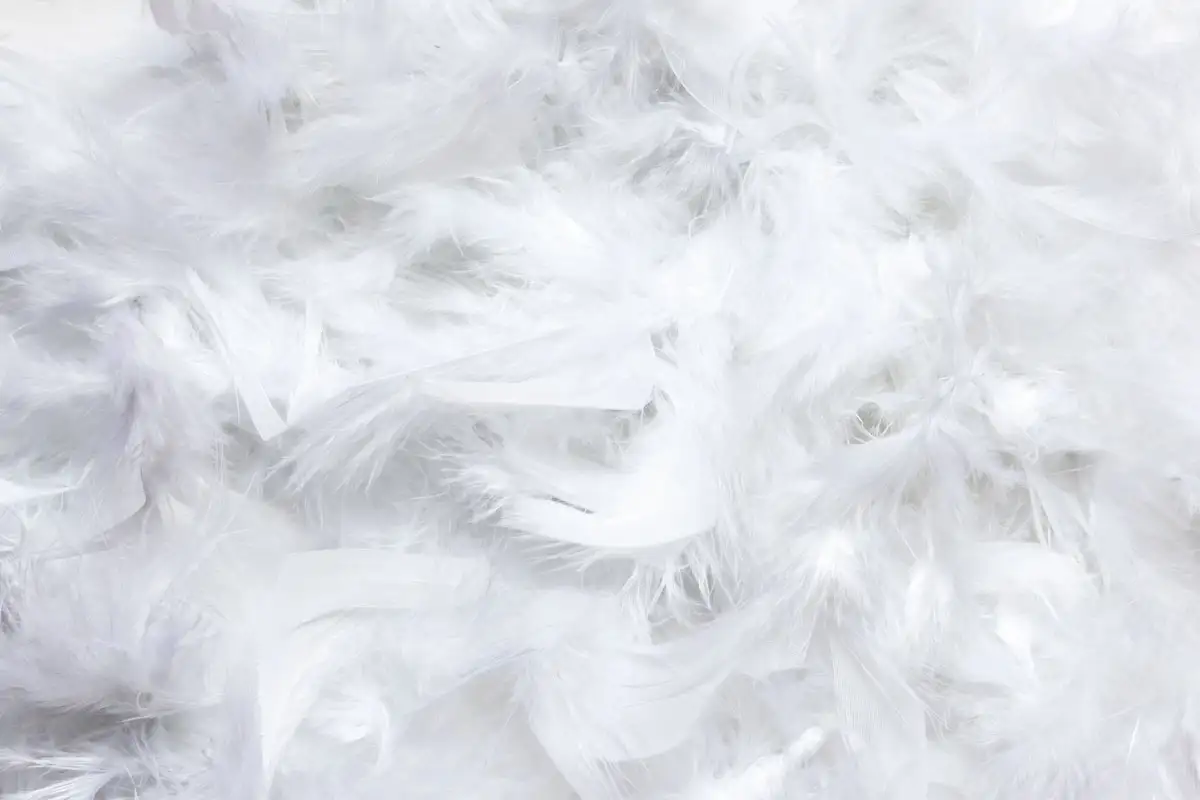
Duck Down vs Goose Down
Down is the soft, fluffy undercoating found beneath the outer feathers of waterfowl. Unlike feathers, down doesn’t have a stiff spine; instead, it consists of fine, lightweight filaments that form star-like clusters. Down is highly insulating, soft, and resilient, making it ideal for luxurious bedding, and high-end throw pillows. Goose down generally has larger and loftier clusters than duck down, which gives it better insulation and durability.
Pros of Down Fill:
- Exceptionally soft and comfortable
- Long-lasting and resilient
- Excellent thermal insulation
- Lightweight yet supportive
- Breathable and temperature-regulating
- Readily available in premium bedding markets
Cons of Down Fill:
- More expensive than most other fillers
- Requires regular fluffing to maintain shape
- May cause allergic reactions in sensitive individuals
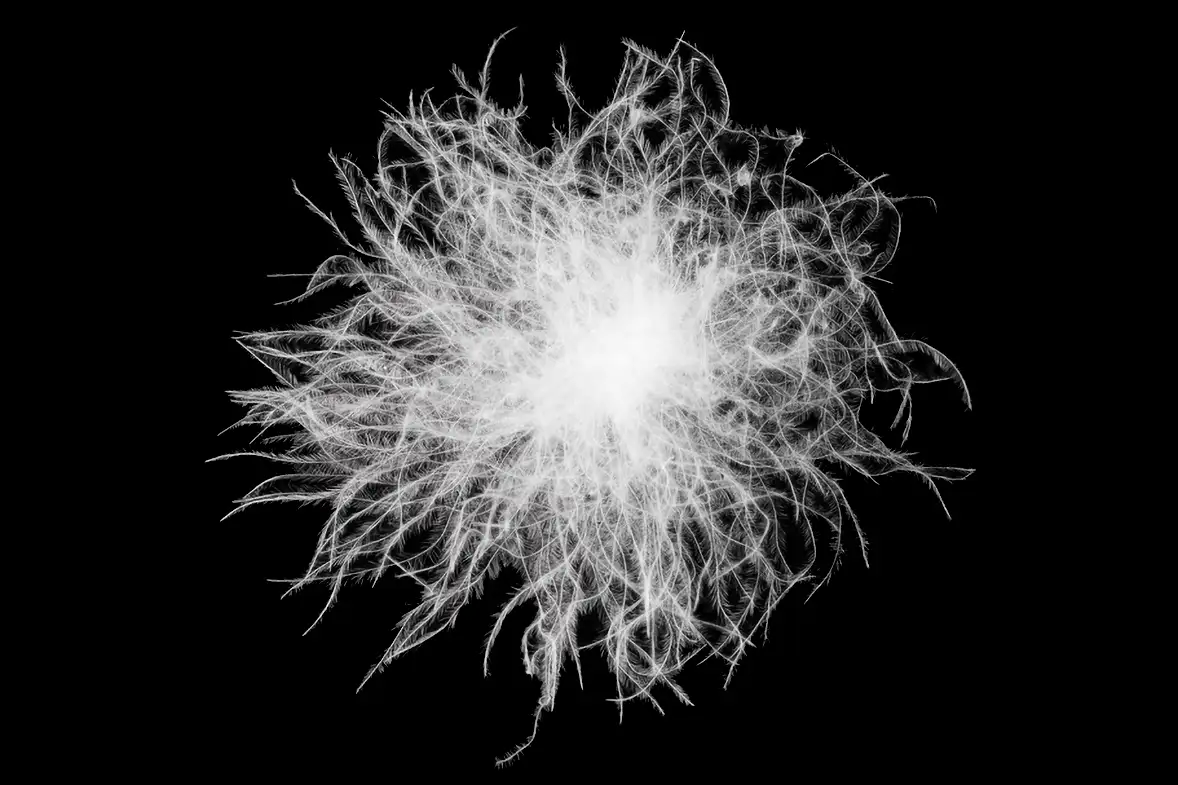
Kapok: The Lesser-Known Natural Fiber
Kapok is a natural plant-based fiber harvested from the seed pods of the kapok tree (also known as Java cotton or Ceiba). It is soft, silky, and biodegradable. While difficult to spin on its own, it makes for an excellent filler material in decorative pillows and cushions.
Pros of Kapok Filling:
- 100% natural and eco-friendly
- Lightweight and breathable
- Naturally antibacterial and dust mite-resistant
- Water-repellent (hydrophobic)
Cons of Kapok Filling:
- Less durable than synthetic alternatives
- Can compress over time
- Limited availability
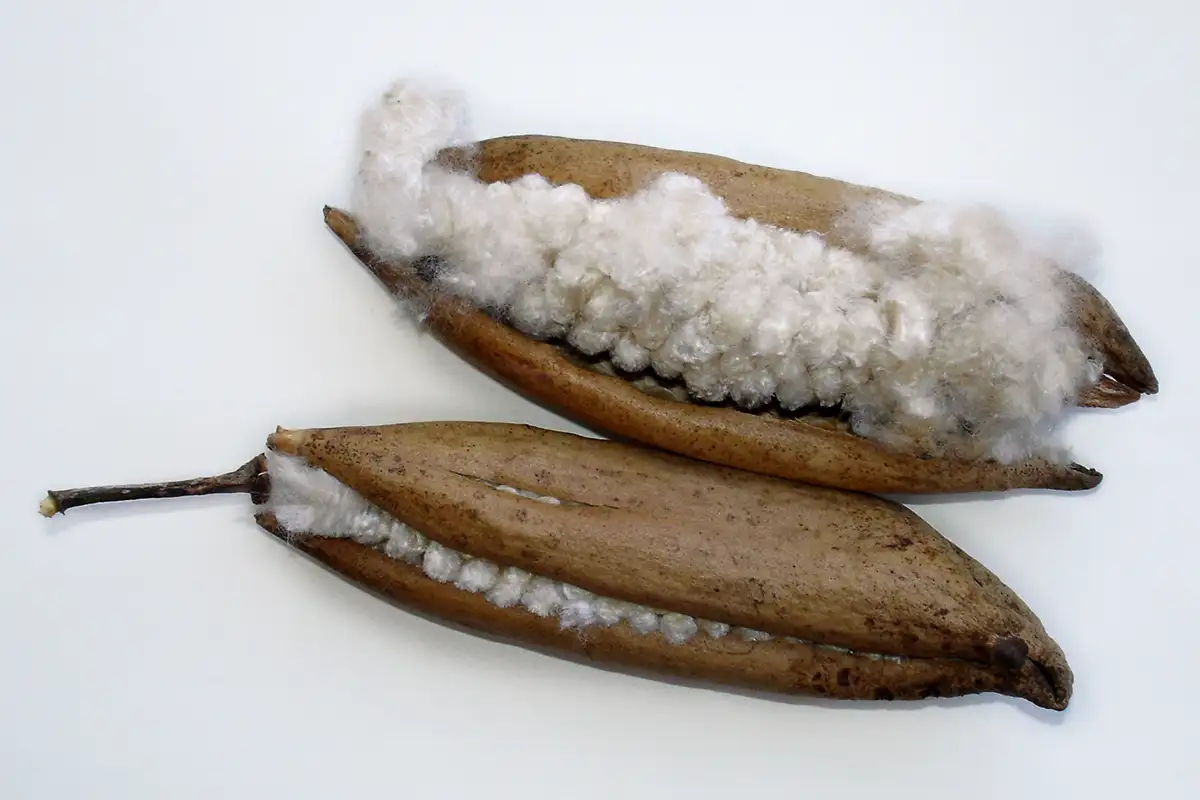
Spelt Hulls
Spelt hulls are the husks of spelt grains, removed by a mechanical winnowing process. This natural material is mostly used for seat cushions, yoga pillows, and aromatic pillows when mixed with herbs like lavender. It’s also a unique and supportive filler option for decorative pillows.
Pros of Spelt Hull Filling:
- Offers stable support
- Breathable and moisture-wicking
- Adapts ergonomically to body shape
- 100% natural and biodegradable
- Pleasant, earthy scent when new (in my opinion 🙂 )
Cons of Spelt Hull Filling:
- May feel too firm for some
- Can create a rustling sound when moved
- Needs occasional refilling as husks break down
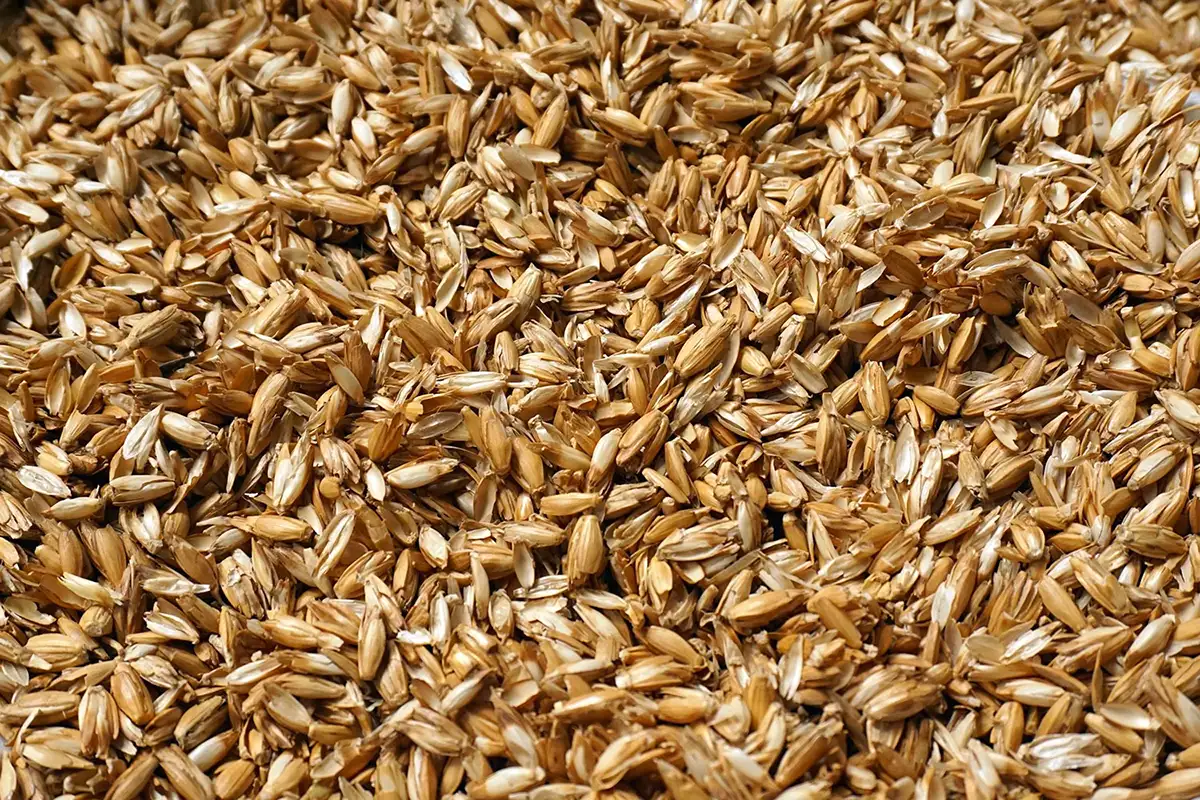
Wool Stuffing
Wool is an animal-based natural fiber with outstanding thermal and moisture-regulating properties. Wool stuffing often comes from coarser fleeces or wool waste, making good use of the entire fleece. It’s soft, resilient, and a long-lasting filler for pillows, toys, and upholstered items.
Pros of Wool Filling:
- Excellent insulation and moisture control
- Provides stable and firm support
- Biodegradable and sustainable
- Resilient—retains shape well
Cons of Wool Filling:
- Can be more expensive than synthetic options
- May trigger allergies in sensitive individuals
- Requires occasional airing out to stay fresh
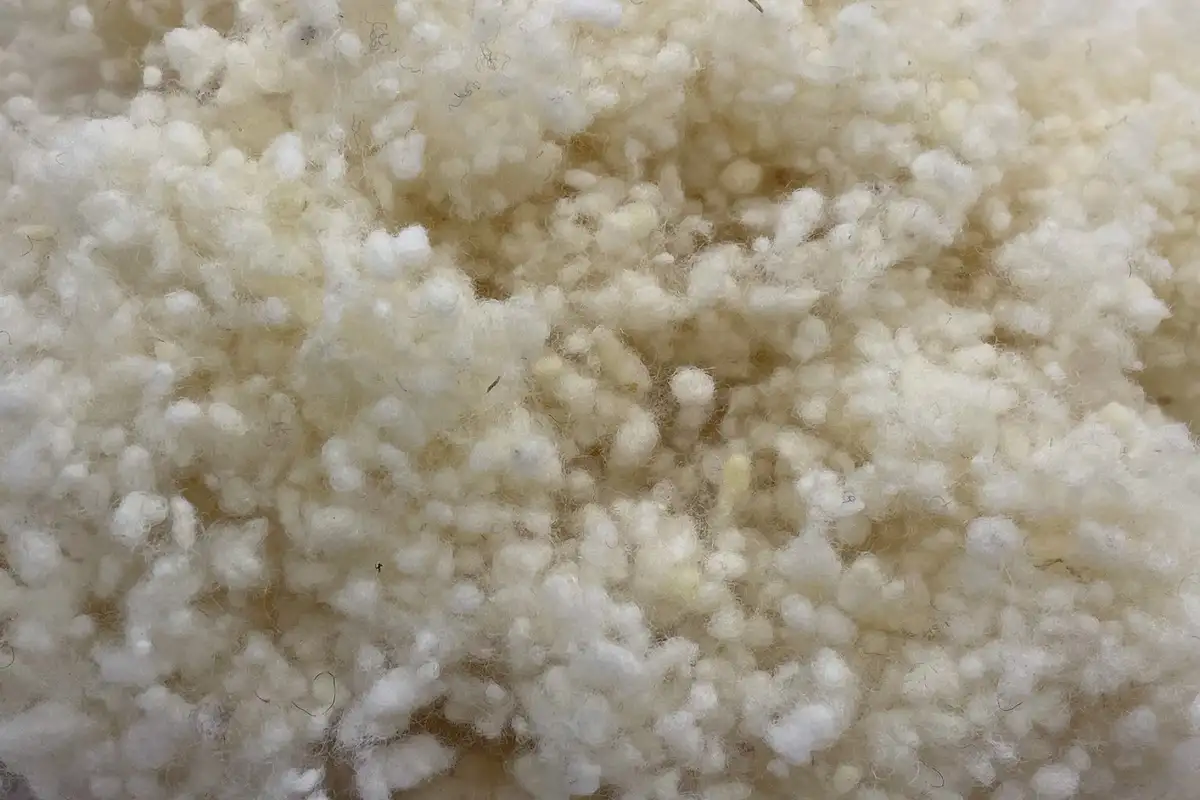
Siliconized Polyester Fiberfill (Cluster Fill)
Siliconized polyester fiberfill consists of tiny synthetic fiber balls coated with silicone for a smooth, fluffy texture that resists clumping. The silicone coating also helps repel dust, bacteria, and allergens. It’s a popular and washable stuffing for throw pillows, bed pillows, and plush toys. Cluster fill is a type of siliconized polyester fiberfill, engineered to mimic the feel of down. Cluster fill is often used as a down alternative in bed pillows, throw pillow inserts, and comforters.
Pros of Siliconized Polyester Filling:
- Hypoallergenic and dust mite-resistant
- Lightweight and soft
- Retains shape well
- Easy to care for
- Does not mold or mildew
- Machine washable up to 40°C
Cons of Siliconized Polyester Filling:
- Less breathable than natural fibers
- May lose loft over time
- Not as eco-friendly as natural options
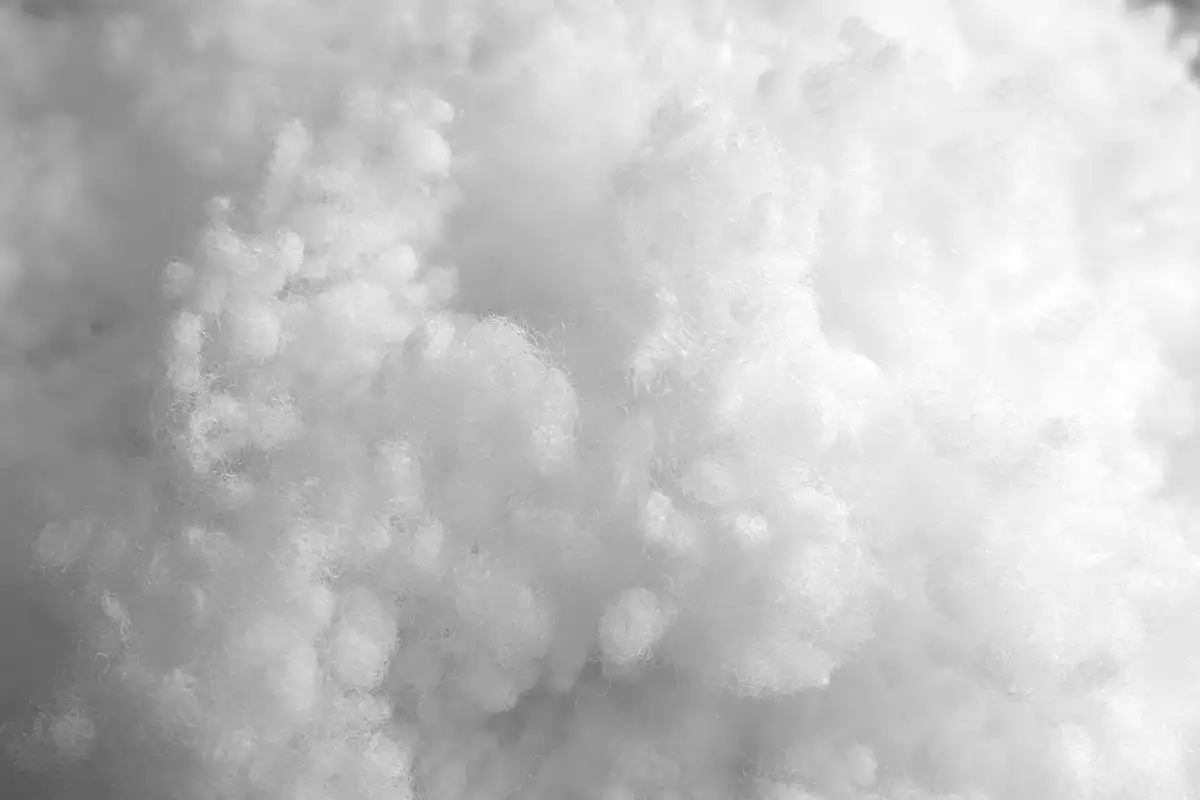
Shredded Foam
Shredded foam is made from small pieces of polyurethane foam, often recycled from furniture or mattress production. It’s dense and springy, making it ideal for people who want a firmer, bouncier throw pillow or seat cushion. It is important to put the shredded sponge in a well-sealed cover so that the sponge crumbs do not escape.
Pros of Shredded Foam Filling:
- Offers firm support
- Durable and long-lasting
- Ideal for structured or sculptural pillows, seat cushions
Cons of Shredded Foam Filling:
- Can retain heat
- Not breathable
- Can develop a chemical smell
- Less sustainable

Polyester Batting or Fiberfill
Polyester batting is a fluffy synthetic material commonly used in quilting and furniture. It’s inexpensive and easy to work with, making it a popular filler for DIY pillow projects.
Pros of Polyester Batting Filling:
- Affordable and widely available
- Lightweight
- Easy to use for crafts and DIY pillows
- Machine washable
Cons of Polyester Batting Filling:
- Tends to flatten quickly
- Offers little structural support
- Less breathable
- Not biodegradable
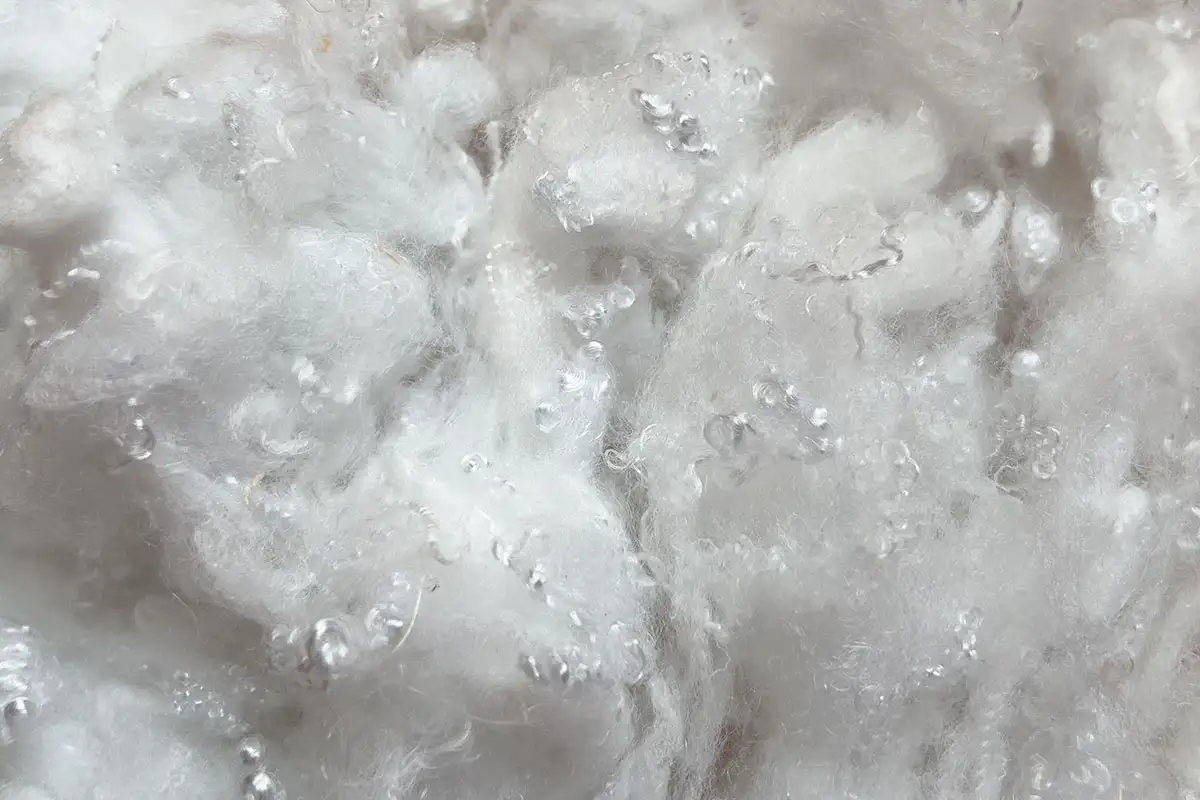
Conclusion: What’s the Best Pillow Filler for Throw Pillows?
So, what is the best pillow filler? The answer depends on your preferences and priorities:
- Looking for firm structure and durability? Try shredded foam or feathers.
- Want plush softness and luxury? Choose goose down.
- Need eco-conscious materials? Go with kapok, wool, or spelt hulls.
- Prefer low-maintenance, allergy-friendly options? Siliconized polyester fiberfill is your best bet.
Ultimately, the best filler for throw pillows balances your desired comfort level, maintenance needs, and sustainability values. Whether you’re handcrafting pillows at home or sourcing inserts for a luxury home interior, the right stuffing makes all the difference.
In our webshop, we also use this type of material (siliconized polyester fiberfill) for sewing washable throw pillow inserts. Based on customer feedback, it’s a very popular choice. It’s hypoallergenic, easy to maintain, machine-washable, and long-lasting. We source this OEKO-TEX® certified material from a local Hungarian manufacturer.
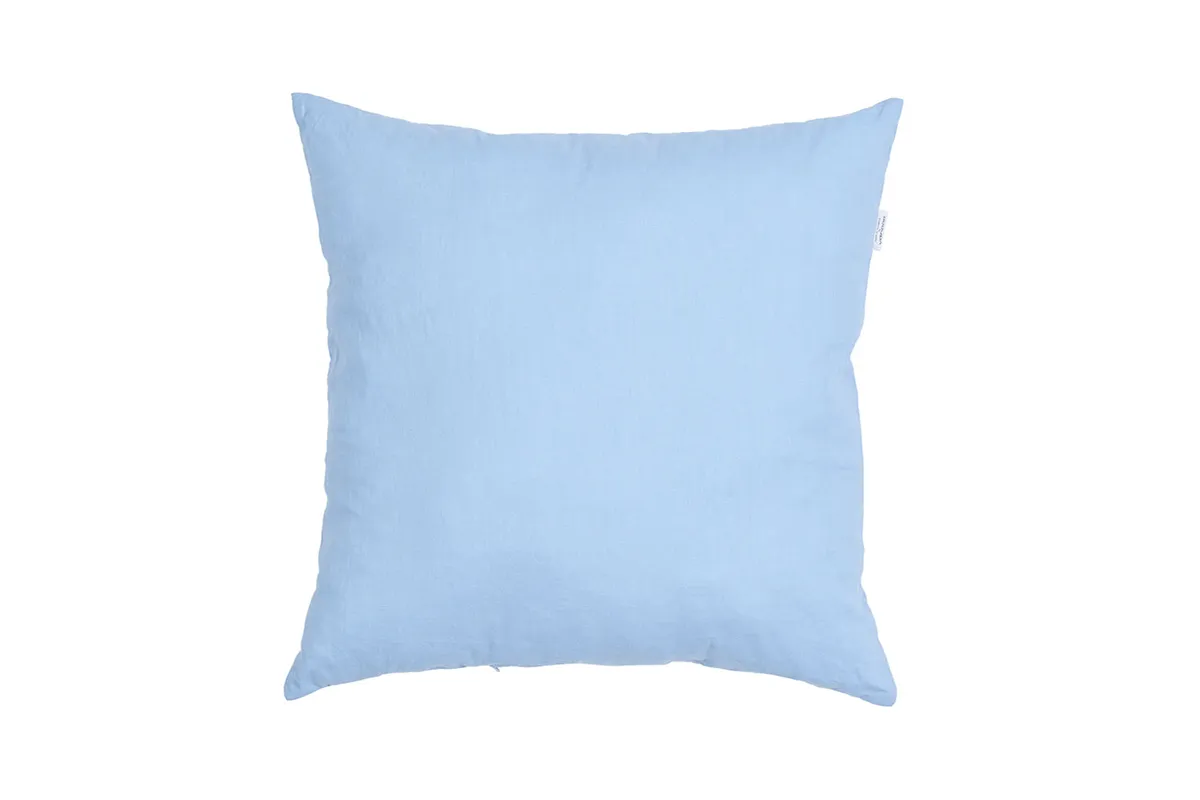
Washable throw pillow form 45×45 cm
Hypoallergenic square shaped throw pillow form made of OEKO-TEX® certified materials. The pillow slip is made of 100% cotton canvas and it is filled with fiber balls. It is machine washable. The pillow form contains more stuffing than an average cushion so you can relax comfortably. The cover is closing with an invisible zip thus you can adjust the softness of stuffing.
Choose a matching size for your decorative pillow cover or order a custom one.
Our studio-made pillow inserts come with a zipper, so you can adjust or even replace the filling as needed. We ship the pillows filled more generously than most commercial options, ensuring they provide comfortable support for rest and relaxation.
If you’re looking for a more natural alternative, feather fill can also be an excellent choice—just make sure to choose a premium quality material from a trustworthy source. High-end down and feather fill available in Hungary offers both luxury and durability, while polyester fibers remain a practical, low-maintenance solution.
You can even combine down and siliconized polyester ball filling in your throw pillows, as they create completely different shapes and support. A feather-filled pillow can be shaped and fluffed, while one with polyester ball filling remains puffy and resilient.
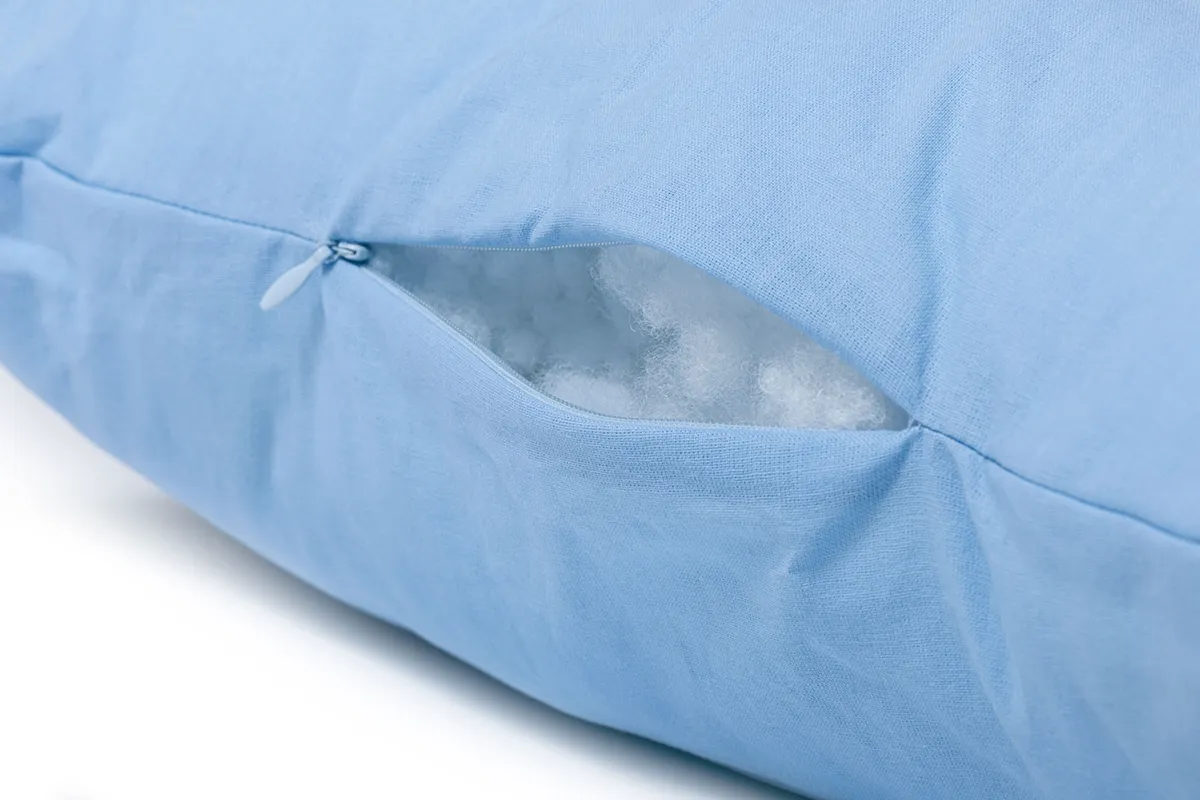
throw pillow insert
Washable throw pillow insert
A throw pillow insert is primarily recommended for stuffing a throw pillow cover. Each pillow inner is closed with a zipper, so the amount of filling can be adjusted as desired. As a further bonus, all products can be washed in a washing machine. This means that after removing the decorative pillow cover, pillow forms can be easily and quickly washed in a washing machine, together with the filling material. In this way, you can easily get rid of dust mites or other contamination created during use, which is a great solution not only for allergy sufferers. If you want to buy decorative pillow insert in a specific size, choose the product called custom-sized pillow inners or please contact the studio for made-to-measure services.
FAQ: Need Help Picking the Right Throw Pillow Stuffing?
-
What is the best pillow filler for decorative throw pillows?
The best filler depends on your needs: down is plush and luxurious, polyester is low-maintenance and hypoallergenic, while shredded foam or spelt hulls provide firm support. At VANDOR studio, we recommend OEKO-TEX® certified siliconized polyester for its comfort, resilience, and easy care.
-
Are synthetic pillow fillers like polyester safe for people with allergies?
Yes — especially siliconized polyester fiberfill, which is hypoallergenic, dust mite-resistant, and washable. It’s a popular alternative to down for allergy sufferers.
-
Which pillow stuffing holds its shape best over time?
Shredded foam and siliconized polyester fiberfill are both highly resilient. They retain their volume and shape even with frequent use, especially in decorative throw pillows.
-
Is there a natural and eco-friendly alternative to synthetic pillow inserts?
Absolutely. Natural fillers like kapok, wool, or spelt hulls are biodegradable, breathable, and sustainably sourced — perfect if you prefer an environmentally conscious option.
-
Can I wash throw pillows with siliconized polyester filling?
Yes. Our throw pillow inserts with siliconized polyester are machine-washable at 40°C. They dry quickly, maintain shape, and are ideal for families or high-use areas.
-
What’s the most durable pillow filler for high-use areas like sofas?
Siliconized polyester is an excellent choice. It resists flattening and provides consistent support, making it ideal for sofa cushions and lounge pillows.
-
What pillow fillers are available at Vandor Studio?
We offer custom-made pillow inserts filled with siliconized polyester fiberfill — a hypoallergenic, OEKO-TEX® certified material sourced from a Hungarian manufacturer. Our pillow inserts are machine-washable, available in custom sizes, and come with zippers for easy refilling. On request, we can also shredded foam-filled seating pillow inserts in premium quality.
Related blog posts
References
- Hogyan készül? Gyetván Csaba blogja: Így kerül a toll a párnába, a pehely a paplanba
- Wikipedia: Kapok fibre
- ApróMagok: Tönkölypelyva
- VNpolyfiber: Siliconized Polyester Filling
- Szivacsmester: darált szivacs

 Deutsch
Deutsch Magyar
Magyar
